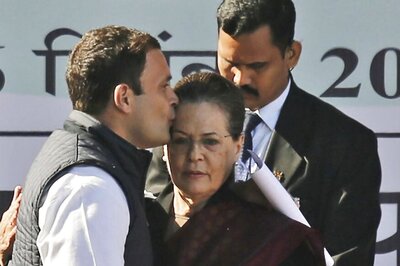
views
Delhi: Metro has become a part of life for Delhiites and the bond seems unbreakable even in death. Apart from past incidents, two people have committed suicide at Metro stations within the past week. Several other cases have been reported in the last two years.
On Monday a 56-year-old man, the father of a local Congress leader allegedly committed suicide by leaping off the Paschim Vihar Metro Station in west Delhi area. The incident took place at around 8am on April 4. Police said that they have recovered a suicide note from him, which said that he was fed up with his life.
The man was discovered lying flat on his back in a pool of blood by a passerby who informed the local police and rushed him to Balaji Action Medical Institute. He succumbed to his injuries during the course of treatment.
The deceased was later identified as Naresh Patni a resident of A Block in Paschim Vihar area. According to his family members he left home for office. Arun Patni, the son of the deceased, is a local Congress worker.
Last Monday, a woman had jumped to her death from the Punjabi Bagh Metro station. She was later identified as Bhavna, a 22-year-old Delhi University (DU) student. She was pursuing graduation through correspondence. Her father, an accountant with a private firm, was in Haridwar when she took the extreme step.
"The reasons for her taking the step are not known," said a senior police officer investigating the incident.
The police said the victim, a resident of Aman Vihar, went to the Metro station, climbed the railing and then jumped to death from a height of more than 40ft.
The previous suicide 'hotspot' was the Janakpuri district centre in west Delhi. After seven such deaths were reported from the area in 2006-2007, it became infamous as the 'death centre.'
The high-rise complex has offices, shops and a mall in the vicinity. But it's not the bustling business that makes news about this place.
To stop people from jumping off the building, grills were fixed in all its balconies. But in early 2007 people were shocked to see a man squeezing himself through the narrow gap and finally jumping to his death.
So, what draws people considering taking their own lives to certain spots? "Past cases of suicide reported by the media play a role in setting a trend. A place's easy approach and accessibility is another reason for repetition.
When people consider taking the extreme step they just want to get it over with quickly and a place that is easily accessible appears ideal," said Dr Anandi Lal, Psychiatrist, University Health Centre, DU.
Past matters
Feb 15, 2011: A 22-year-engineering student committed suicide by jumping off an elevated Metro station in Kirti Nagar of west Delhi. He was studying in the second year at a private college in Rajasthan.
August 6, 2010: A 52-year-old man attempted suicide by jumping before a train at Delhi's Janakpuri East metro station. The train operator immediately applied emergency brakes and the person was rescued.
March 7, 2007: A middle-aged man committed suicide by jumping in front of a train at Chawari Bazar Metro station in central Delhi. The man died on the spot.
July 18, 2006: A woman allegedly committed suicide by jumping before a Delhi Metro train at Chandni Chowk. The Twenty-five-year-old had been missing from home for a few days.

















Comments
0 comment